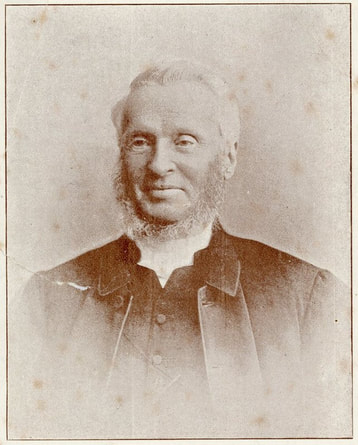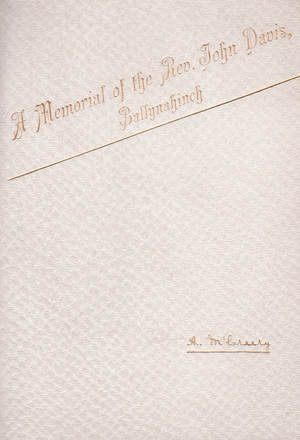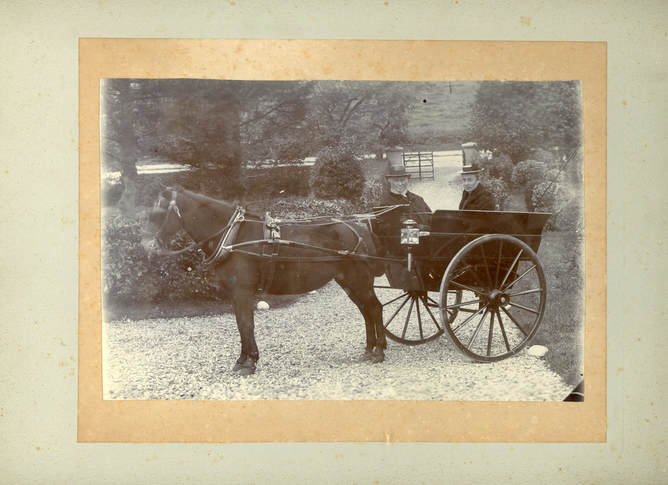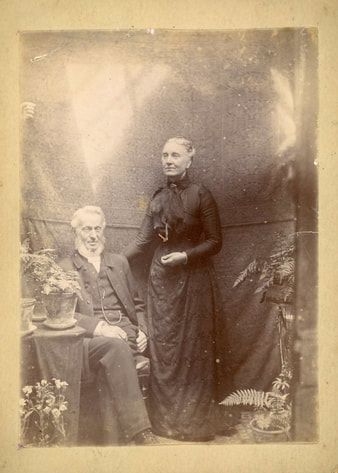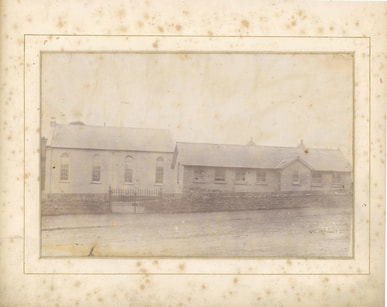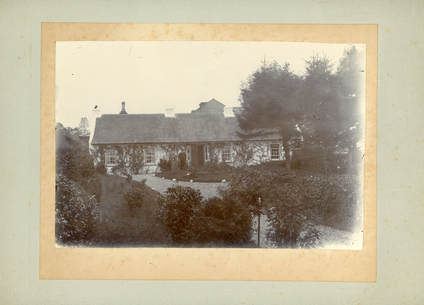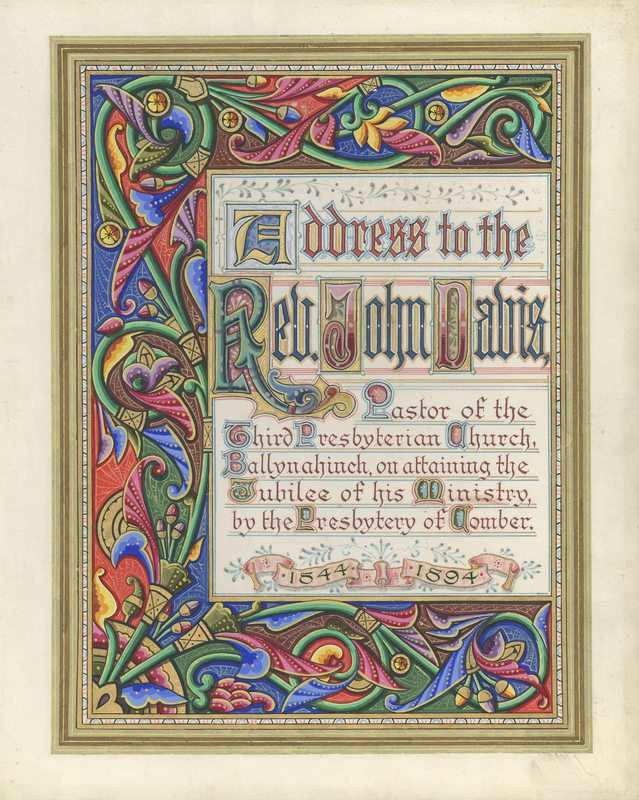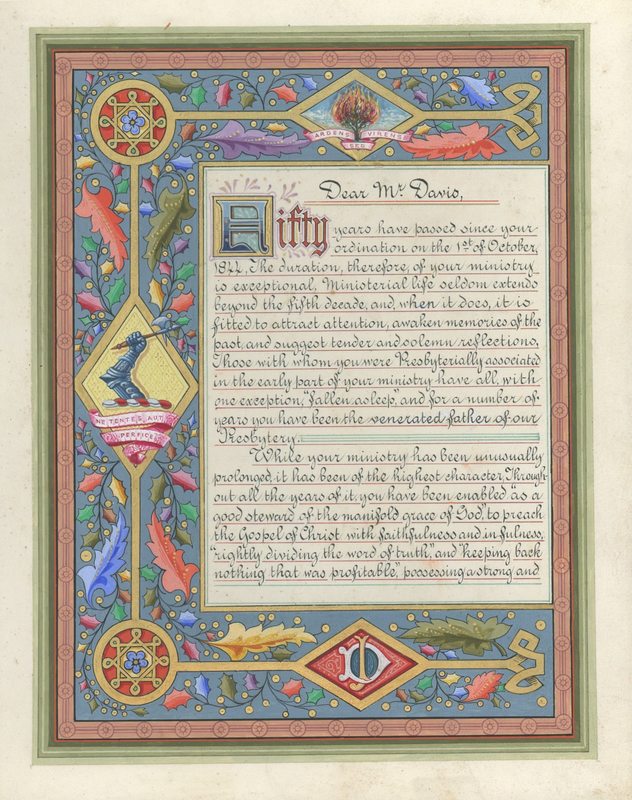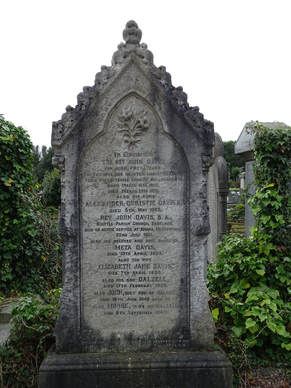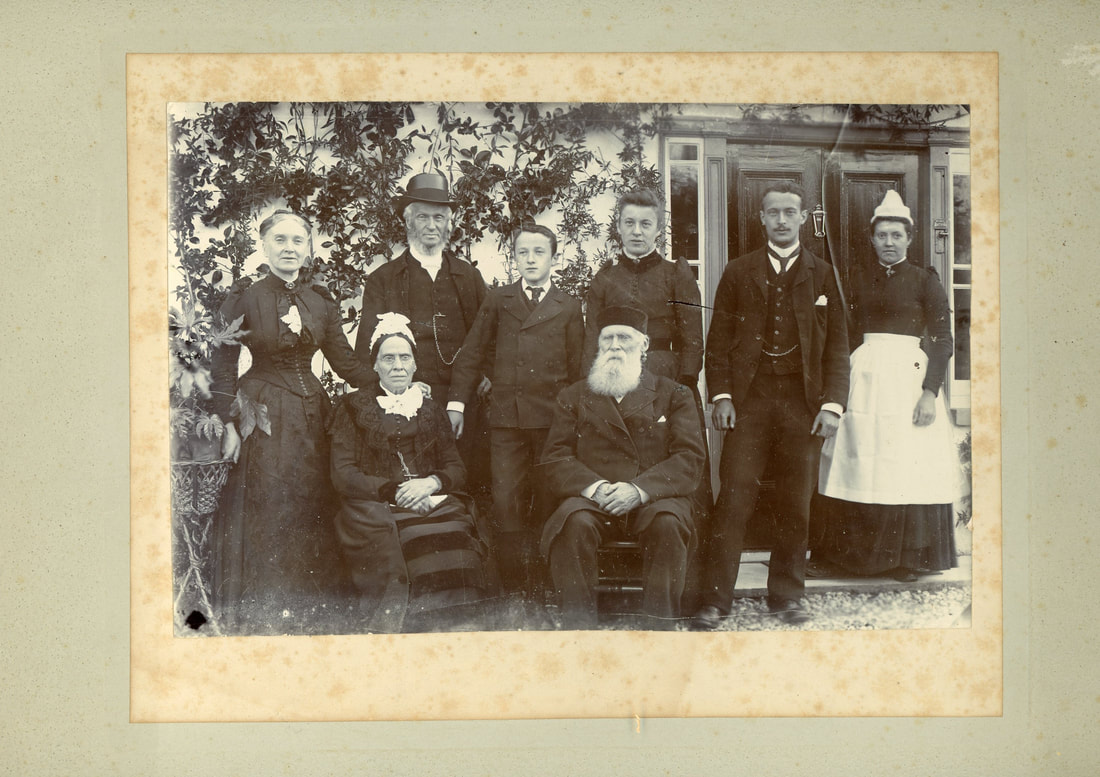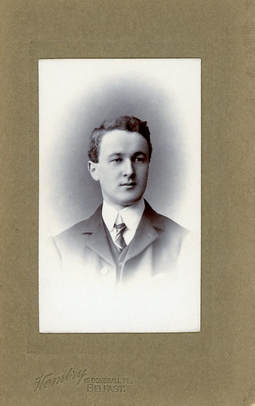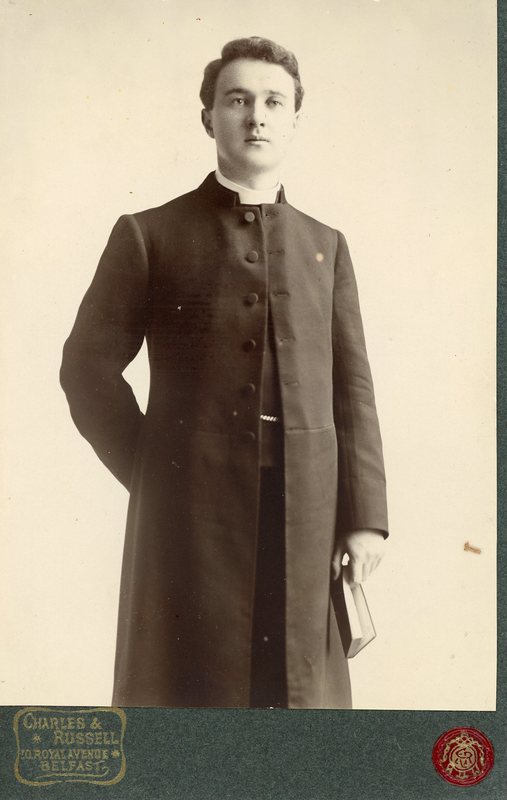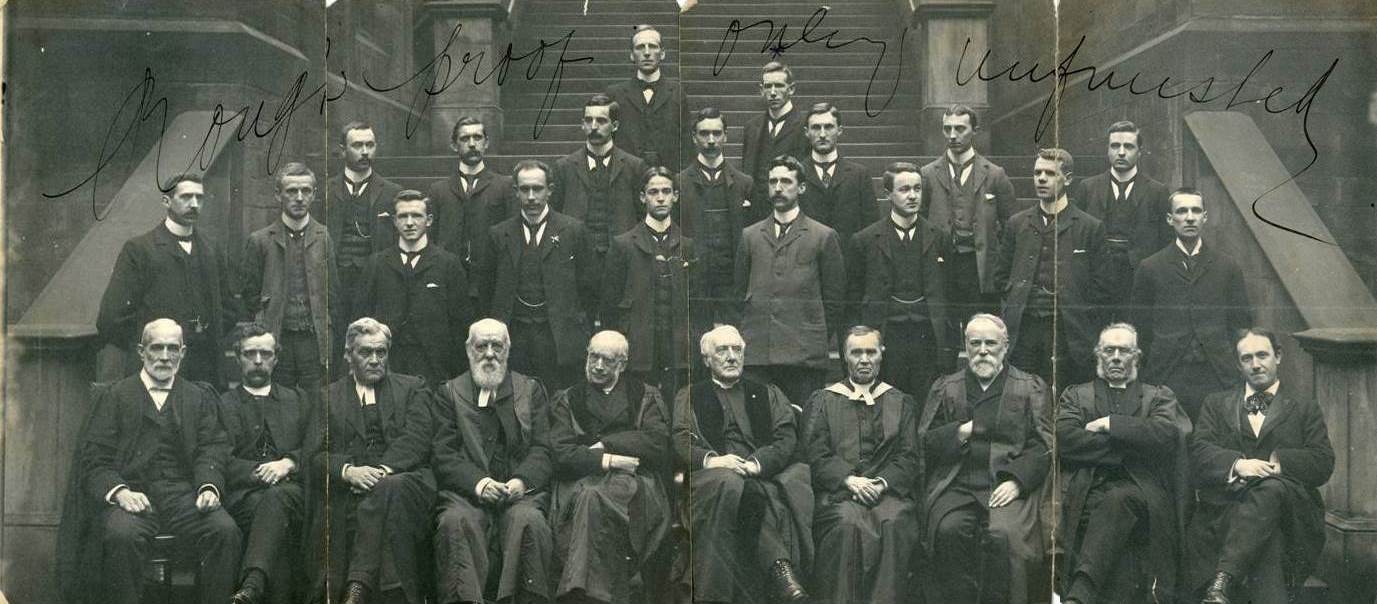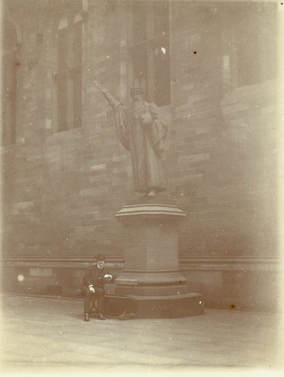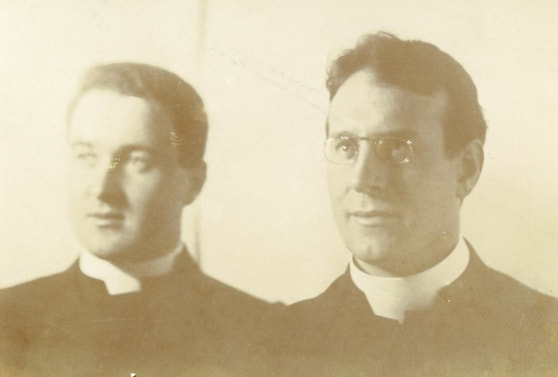I. GENESIS
"I will fear no evil, for Thou art with me, Thy rod and Thy staff, they comfort me"
Psalm 23:4.The dying words of the Rev John Davis DD (A Memorial of the Rev John Davis , Ballynahinch, 1895)
Psalm 23:4.The dying words of the Rev John Davis DD (A Memorial of the Rev John Davis , Ballynahinch, 1895)
John Davis (1878 - 1917) was the youngest of five children born to the Rev John Davis DD (1819 - 1895), “one of the most popular and highly esteemed ministers of the Irish Presbyterian Church." A 'son of the Manse', John's formative childhood years were framed against a backdrop of evangelical Presbyterianism and ministerial service and it's therefore perhaps unsurprising that both he and his brother, Alexander Christie (1871-1903) would follow their father into the Presbytery.
THe rev. john davis, d.d.
John’s father, the Rev John Davis DD, was born in Hillsborough, Co. Down in 1819. He excelled academically, successfully gaining entrance to the Royal Academical Institution, Belfast and in 1835 he was recommended as a candidate for the Ministry of Dromore. He continued his education at Old College, Belfast, graduating in 1838, following which he was licensed by the Dromore Presbytery in 1843 (although on the same day at his own request he transferred to the Presbytery of Belfast).
On 1 October 1844 the Presbytery of Comber met for the ordination of the Rev John Davis as minister of the Third Presbyterian Church, Ballynahinch. The church itself was relatively modest, and soon after his ordination a programme of works to enlarge and improve the building commenced. These works, undertaken in 1847, amounted in effect, to a complete rebuilding of the church at considerable expense. This cost was to be met by the congregation but almost immediately the potato famine took hold. The debt incurred in the rebuilding of the church caused serious embarrassment for John’s father as he "alone, or with others, was personally responsible for it."
|
"Though we commenced improvements under very favourable auspices, no sooner had the church been completed, when the long-to-be-remembered visitation of Providence fell on our unhappy land, blighting the farmers' staple esculent, the potato. From '46 to '49, years of suffering almost unparalleled in the land, poverty, disease, and death, and trying separation, in the removal of many to the Western Continent, were some of the results. I had, single-handed, to meet difficulties, for the little the congregation promised they were unable to pay. The debt increased, creditors became clamorous.” (A Memorial of the Rev John Davis, Ballynahinch, 1895)
It quickly became clear that it would be hopeless seeking to raise sufficient funds at home; "I saw that an extraordinary effort must be made, and without, I might say consulting flesh and blood, I resolved to try the generosity of America." (A Memorial of the Rev John Davis, Ballynahinch, 1895)
On 3 April 1849 a request was made to the Presbytery for leave of absence, which granted, the Rev John Davis boarded a sailing ship "freighted with immigrants" and set sail for America. He started his mission in Philadelphia before travelling through the United States and Canada, meeting a number of "other ministers of the Irish General Assembly, on a similar begging expedition."
|
Arriving in Pittsburgh he noted that half the population were Irish immigrants or their immediate descendants. In a letter to his congregation from Pittsburgh dated 21 July 1850, he was clearly appalled that slavery was still commonplace:
"Since I last wrote to you I visited Baltimore, in the state of Maryland…a slave state. I was much shocked to see and hear of Irishmen as the worst of slave masters...there are nearly four million slaves in this country bought and sold...Britain brought them here and left a cursed legacy to the country when the United States asserted their independence." (A Memorial of the Rev John Davis, Ballynahinch, 1895)
He returned to Ireland after nearly two years in America in late 1850 or early 1851, having raised £800 which substantially covered the church debts: "He must have returned home with a victors joyous feelings. He had proved his ability, resourcefulness and fortitude. Only a strong man could have undergone his travels and labours. Welcomes back and congratulations on his achievement greeted him on his return." For several years following his return he was courted by Cooke's Church, the Irish Presbyterian Church of Toronto; an offer which was clearly given consideration: "The field was inviting, the city beautiful for situation, and one remarkable for the salubrity of its climate" (A Memorial of the Rev John Davis, Ballynahinch, 1895). He declined the offer and in so doing won the lasting affections of his congregation.
He clearly maintained close ties with contacts in the United States. On 25 October 1870 the degree of Doctor of Divinity was conferred on the Rev John Davis by the governing board of Westminster College, Pennsylvania: "I can assure you that the thing itself is no small honour, and the manner in which it was done, under suspension of rule, greatly enhanced its value. You will, no doubt be astonished, but honours do come sometimes, as in your case, unsolicited." It was however an honour John's father did not feel he could accept, in the belief "that there are very many ministers in our General Assembly much more worthy, and to whom no such honour has been offered."
Evangelical in his approach to the ministry, he was not afraid to publicly debate and defend Presbyterianism and the Westminster Standards in the face of the growing popularity of Methodism. In 1861 he and the Methodist minister, the Rev. Benjamin Bayly of Lurgan, eloquently, but very publicly, aired their opposing views in a series of letters published in the Belfast Newsletter.
He invested considerable effort in the supervision and successful management of the Sabbath school; in 1860 the school had around 400 pupils. In 1868 the school's continued expansion necessitated the construction of a new school house at a cost of £400 and a grant was obtained from the General Assembly, to be repaid by the congregation and friends. It was agreed that "this was not too large a sum for the skill and experience of the Rev John Davis in raising funds."
As an interesting aside, John’s father is mentioned in glowing terms on a number of occasions in Amanda McKittrick Ros' last book 'Helen Huddleson' which is centred around Ballynahinch. McKittrick Ros (who has the unenviable reputation as being the 'worst novelist ever') was born Drumaness, Co. Down in 1860 but was baptised at the Third Presbyterian Church, Ballynahinch in 1861; likely by the Rev John Davis who we assume she held in high regard!
John's father stood down from active pastoral duties in May 1893. The following year, the Jubilee of his Ministry, was marked by members of the General Assembly, Presbytery, and congregation and he was presented with an 'illuminated album' of the address read by the Rev McCreery. In responding, he said:
"Our church property is free of debt. For situation and suite of buildings it will bear a favourable comparison with most of our country congregations." In acknowledgement of the support his wife Elizabeth had given him; "you kindly and justly refer to Mrs Davis who has been my faithful and devoted partner for more than a quarter of a century…had it not been for her unwearied care, humanly speaking, my name would have been added to the long role of the dead. " (A Memorial of the Rev John Davis, Ballynahinch, 1895)
The Rev John Davis died on 19 March 1895. We are told he "summoned his sons to his bedside to hear their dying father's last words to them, which they will never forget." His funeral held the following Friday was private and the chief mourners at the grave in Belfast, were his three sons: Dalzell, Alexander Christie and John. His wife and daughter remained at Ballynahinch.
EARLY YEARS
John spent his childhood at the family home, The Cottage, Ballynahinch with his parents, two brothers, Dalzell (1870 – 1938) and Alexander Christie (1871 – 1903) and his sister Meta (1869 – 1925). It seems probable that John was educated for a period at the Sabbath School, established and supervised by his father.
Campbell college and queen's college, belfast
In September 1894 aged fifteen, John enrolled at Campbell College, Belfast and was one of the founding pupils. Sadly his time there was cut short prematurely by the failing health of his father and he left in February 1895.
|
In summer that year, John sat and passed the Royal University of Ireland faculty of arts matriculation examination before enrolling at Queen's College, Belfast for his first year 1895 / 1896. For two years it appears that that he received private tuition from John Finnegan in Donegal Pass and subsequently Botanic Avenue, before re-enrolling at Queen' College and Kelvin House, Botanic Avenue and sitting his final Royal University of Ireland exams in the summer of 1899, graduating with a Bachelor of Arts degree in Mental and Moral Science and “several ‘first places’, and numerous other awards, including two gold medals for scripture reading, and the ‘Challenge Gold Medal’ in elocution." He also enrolled at Assembly's College, the Presbyterian College (today Union Theological College, Belfast); in all likelihood as the Royal University of Ireland did not examine in Theology.
|
NEW COLLEGE, EDINBURGH
Leaving Belfast, John enrolled at New College, Edinburgh between 1900 and 1901. New College was established in 1846 as a college of the Free Church of Scotland, which had split from the established Church of Scotland following the Disruption of 1843. Interestingly, in 1900, the year John enrolled at New College, the Free Church of Scotland joined with the United Presbyterian Church of Scotland to form the United Free Church of Scotland. A graduation photograph taken in 1901 captures the masters and students of John's year and includes some notable individuals including Principal Robert Rainy (1826 - 1909), Professor Alexander Robertson MacEwan (1851 - 1916) and Professor Marcus Dods (1834 - 1909). In another photograph from his time in Edinburgh, John is seated at the foot of the statue of John Knox in the New College quadrangle: the leader of the Reformation and founder of the Presbyterian Church of Scotland, depicted preaching, holding a bible in his left hand, his right arm gesturing towards heaven.
John subsequently enrolled to study Divinity at Edinburgh University in 1902 but completed at most only one year of study. His brother, Alexander Christie also a student of theology, who like John, had studied at the Royal University of Ireland, Assembly's College and New College, Edinburgh (1901 – 1902), died suddenly in 1903. The two brothers were undoubtedly close and John returned to Belfast to mourn for his brother and spend time with his family before returning to Edinburgh the following year.
Proudly powered by Weebly
